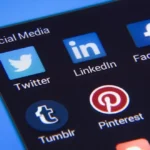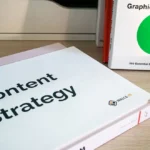Right, let’s dive in! Today, I’m chatting with Sofia, a seasoned crisis communications expert, about how to leverage X (formerly Twitter) to not just survive a reputational crisis, but actually thrive and build stronger customer relationships. It’s a real minefield out there, but Sofia’s insights are pure gold.
“So, Sofia,” I began, settling into my virtual armchair, “when a company faces a potential PR nightmare brewing on X, what’s the very first thing they should do?”
“Monitoring is absolutely key,” she replied, without hesitation. “You need to know what’s being said about you, when it’s being said, and by whom. Think of it as your early warning system. Use tools like Brandwatch, Mention, or even just X’s advanced search to track keywords related to your brand, products, and key personnel. Don’t just look for your brand name; monitor common misspellings, related hashtags, and even phrases associated with your industry that might signal an impending problem.”
That makes perfect sense, I thought. Early detection is half the battle. But what about responding to the crisis itself? How do you craft an effective apology on X, given the platform’s inherent limitations?
Sofia stressed the importance of speed, transparency, and empathy. “X is a fast-moving beast. Acknowledge the issue promptly, even if you don’t have all the answers yet. A simple ‘We’re aware of the situation and are investigating it thoroughly’ buys you valuable time. Then, and this is crucial, take responsibility. Avoid weasel words or blaming others. A genuine apology goes a long way. Outline the steps you’re taking to rectify the situation and prevent it from happening again. Finally, demonstrate empathy. Show that you understand the impact of the crisis on your stakeholders.”
She also highlighted the importance of tailoring your message to the X audience. “Remember, brevity is the soul of wit on X. Keep your responses concise and easy to understand. Use visuals where appropriate – a short video apology from the CEO can be incredibly powerful. And always, always be human. Avoid corporate jargon and robotic responses. People want to see that there are real people behind your brand who genuinely care.”
We moved on to discussing some real-world examples. Sofia pointed to several companies that had successfully navigated crises on X by using the platform to provide real-time updates, answer customer questions, and offer support. She also cited examples of companies that had made the situation worse by issuing tone-deaf apologies, deleting negative comments, or engaging in arguments with their critics. The lesson was clear: authenticity and transparency are paramount.
But what about proactive crisis prevention? Can X be used to head off potential disasters before they even happen?
“Absolutely!” Sofia exclaimed. “A proactive communication strategy is essential. Use X to build trust and credibility with your audience before a crisis hits. Share positive stories, engage in meaningful conversations, and address concerns promptly. Monitor X for potential issues and address them before they escalate. Consider hosting regular Q&A sessions on X to answer customer questions and build relationships. Think of it as building a reservoir of goodwill that you can draw upon in times of trouble.”
Sofia had also noted the importance of understanding the legal landscape surrounding online communication. “Be mindful of defamation laws and privacy regulations,” she warned. “Avoid making unsubstantiated claims or disclosing confidential information. Consult with legal counsel before making any public statements that could potentially expose you to legal liability.”
Before we wrapped up, I asked Sofia for her top tips on using X to generate new business after a crisis.
“Rebuilding trust is key,” she said. “Show that you’ve learned from your mistakes and are committed to doing better. Share positive customer testimonials, highlight improvements you’ve made as a result of the crisis, and offer incentives to win back lost customers. Use X to showcase your expertise and thought leadership. Engage in conversations with industry influencers and participate in relevant discussions. Demonstrate that you’re a valuable member of the X community and that you’re committed to providing value to your followers.”
So, there you have it! A comprehensive guide to X-driven crisis management and reputation repair, straight from the expert’s mouth. It’s about monitoring, responding with authenticity, proactively engaging, understanding the legalities, and ultimately, rebuilding trust. By following these steps, you can turn a potential disaster into an opportunity to strengthen your brand and build stronger relationships with your customers.











